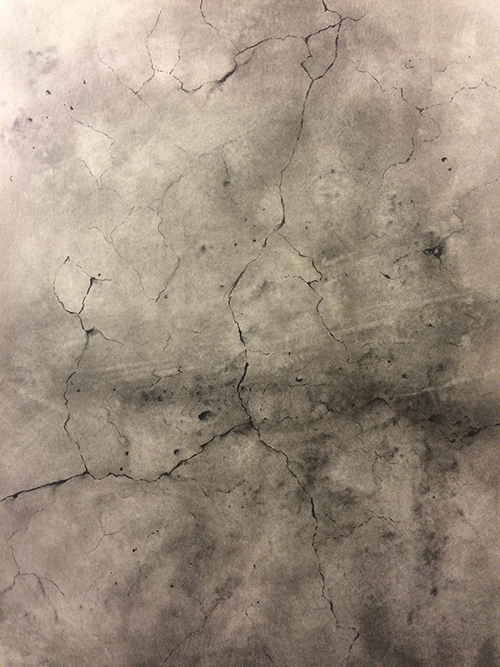July/August 2016 Cover Artist: Chris Hefner

This month's cover art is from a charcoal drawing by filmmaker and visual artist Chris Hefner. Print subscribers will see that this cover GLOWS IN THE DARK!
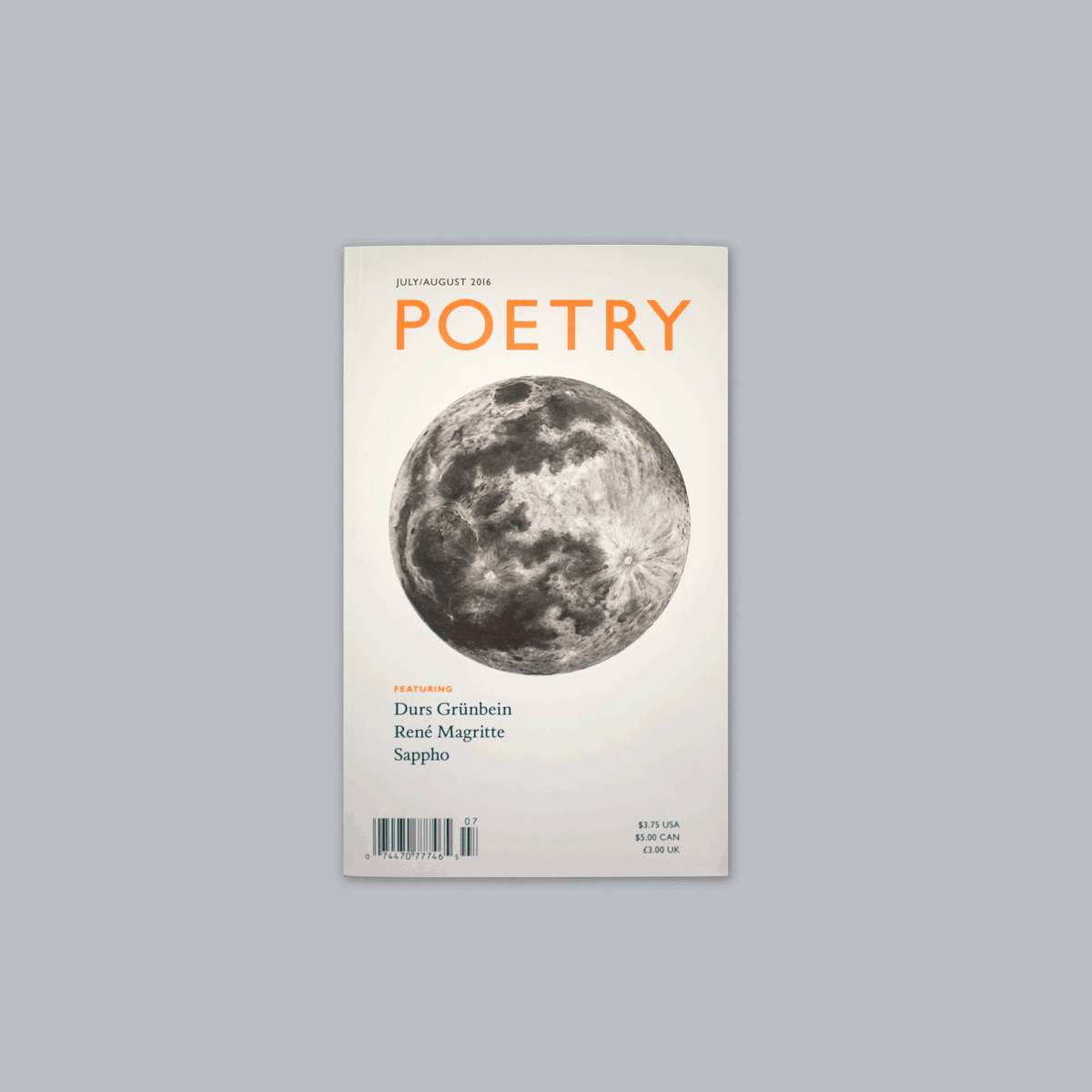
It's a first for Poetry, and the least we could do to commemorate the wonderful "moon poems" by Federico García Lorca, as translated by Sarah Arvio. It seems even the moon has its limitations:
The evening sings a lullaby
to the orangesMy little sister sings
"The earth is an orange"The moon weeping says
"I want to be an orange"You can't be—my dear—
even if you turn pink
or a little bit lemon
How sad!From "Two Evening Moons," by Federico García Lorca, tr. by Sarah Arvio
And here is Hefner, on his own work, the moon, and human limitations (with a few more illustrations for good measure):
A subject that I find to be more or less perennial in my work is that of human limitations and the systems, mythologies, and projections that we construct around its borders. Certainly we as a species have long been in the business of reaching beyond our grasp. Our motivation seems to have always been to interface with our limitations by obsessing over them in one way or another. Whether that obsession takes the form of innovation or fantasy, our greatest achievements, atrocities, misconceptions, and passions cluster in ever more elaborate forms the closer they come to that which is both omnipresent and fundamentally unknowable: the fact of death. Hand in hand with this, of course, comes the problem of the construction of meaning. Though meaning, as a universal human concern, is arguably entirely imaginary, the desire to find or construct meaning for our experience surely becomes amplified as we approach our common chasm. My work often indicates occurrences at the borderline between what is unknowable and what exists exclusively within our largely imaginary experience of the world. There is a certain intimacy to finding one's self absolutely lost.
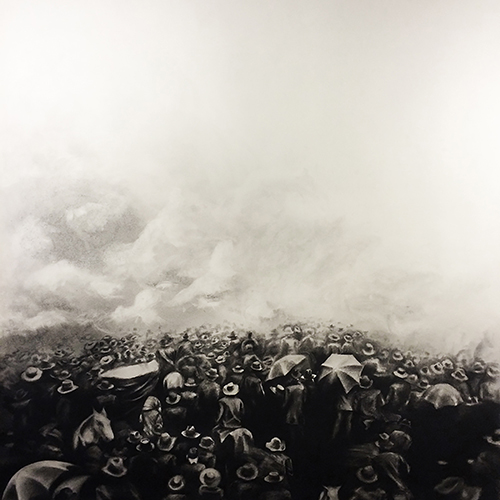
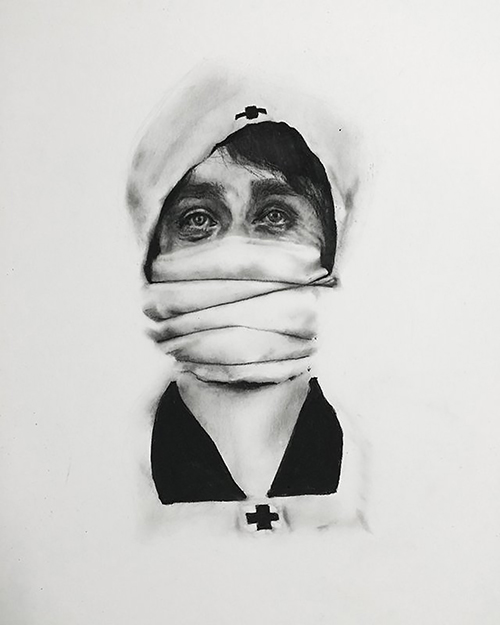
I work in a few different ways, mostly focusing on charcoal drawings and filmmaking these days. In my films I'm able to unpack my themes through a mixture of recognizable narrative structure and more abstract methods of dealing with images, sound, and time. Drawings need to be more distilled, though I think of my drawings and films as threads in the same fabric. The main difference being the arguably important matter of image authorship. For a long time the images I drew were exclusively selected from existing sources. Found photos, movie stills, newspapers, etc. In many ways I thought of my work with these as a half step removed from collage. Lately, though, my images have moved closer to my film work in that I've begun photographing my own initial reference material, and so the authorship of the image has begun to feel much more like filmmaking to me. For the most part, though, I'm of the opinion that images are images and their literal source is only intermittently interesting to me.
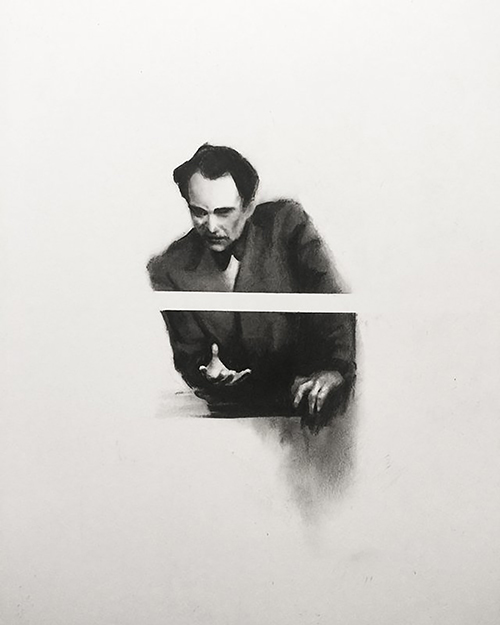

The drawing featured on the cover of the July/August edition of Poetry, however, is a bit of an odd mixture of an existing image source and "original" imagery. Technically this drawing was made from a photograph of the moon that I did not take, however one could do all sorts of scab-picking around the subject of authorship of an image of something so ubiquitous and passive as earth's moon. That argument, though, describes an interesting route back to the human desire to create meaning, to feel significant and to claim this life as our own. In a tie with the sea, the night, the sun, and a handful of other historical constants for earthlings, the moon has been an eternal receptacle for human projections of significance. Though, of course, all of these things have variously measurable impact upon our experience, they have also stood as unwitting totems of manufactured meaning for us. We hang our desires, manias, decisions, and passions on the moon. We find it by turns romantic, ominous, and beautiful. We see human faces in its surface. My reasons for pouring a chapter of my time into this drawing are my own, just as your innumerable lunacies belong to you. It may be that these manufactured significances are the only things that truly do “belong" to us. The moon, meanwhile, remains as un-claimable as it ever was, disinterested but available, as open as a page.
